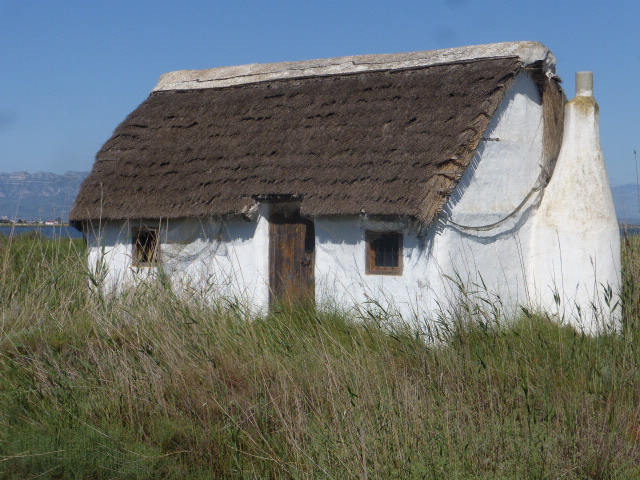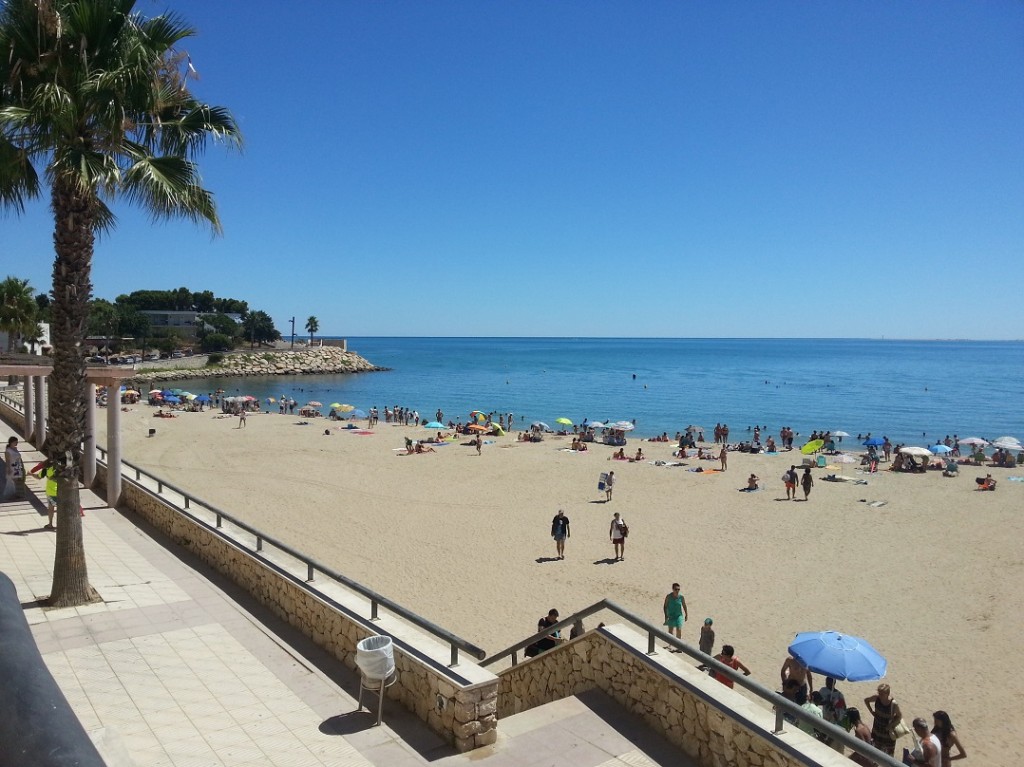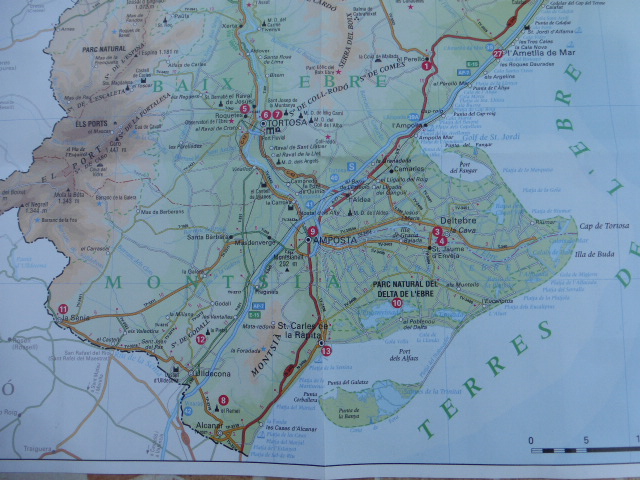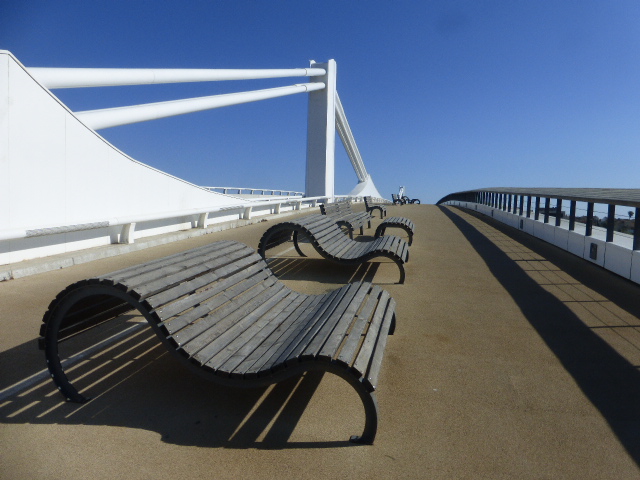Racing to catch the sunrise on the Ebro Delta
Phil accelerated as fast as he dared along the narrow sandy track towards the sea but braked sharply as we came up against yet another sand dune blocking our way.
Our journey in the semi-darkness had been like some manic computer game; we had been caught in an endless maze of dead-ends, narrow bridges which crossed irrigation ditches and long straight causeways which gave no indication of our position because of the jungle of reeds which waved their fluffy heads high above the track.
‘Come on. It’s almost time!’ Phil unsnapped his seat belt and grabbing his camera shot out of the car and bolted across the dunes. We had been driving for more than an hour, setting out at stupid o’clock so that we could catch the sunrise over the delta, and I was damned if I was going to miss it.
Charging after my friend I reached the crest of the dunes just as a glimmer of burnt sienna lit up the black horizon from below far out in the distance over the sea. And then the sun, a huge heavy orb lumbered its way with a massive effort upwards, turning the wading fishermen into sooty black silhouettes against the orange landing strip that it cast across the water.
It had been worth the early morning start for this spectacle that nature was providing, and in the tranquility it was very easy to comprehend how our ancestors with no understanding of a round planet believed in a sun god, with the sun giving light and life, warming the earth as it rose up into the sky every morning.
Phil and I were at the Delta d’Ebre, a huge expanse of land where the River Ebre meets the sea. The water has formed a massive plain which is crisscrossed with irrigation channels and the raised causeways which had proved so difficult to navigate earlier.
The river Ebre is one of the most important rivers on the Iberian Peninsula and man has cultivated the fertile plains where it joins the sea since the Roman times. The main crop is rice, hence the fields with their high banks to contain the water and the little stone pump houses which stand at the junctions.
The landscape is ever changing as the fields dry or are purposefully flooded depending on the crop, and then as the rice plants grow, this watery wonderland turns a vibrant green with the fresh young shoots. Water reflects the sky and the mountains which form a backdrop to the plain and through which the river has journeyed from the other side of the country. The light early in the morning has a clarity about it and the air is sharp with ozone; and with more than 400 species of birds documented as visiting the rich pickings of algae, insects and crustaceans it feels alive.
A large area of the delta has been set aside as a nature reserve and here and there you will find squat hides hiding on the edges of the lagoon or tall look-out points on spindly stilts which loom above the reeds.
A large flock of pinky-white flamingos wade in a huge shallow lagoon and storks, ibis and countless other wading birds, water birds and ducks prod and poke around in the flooded fields for food. Birds sit on nests which they have built in the middle of the rice, marooned and raised high above the water on mounds of twigs and grass. This is a bird lovers’ paradise.
In the middle of all this nature there is a sizeable town, Deltebre la Cava which is bordered on all sides by fields and water. Stuck out in the middle of the delta I expected the town to appear as if progress had passed it by but it is an oasis with cute coffee shops and brightly painted houses.
And nowadays it has a spectacular new bridge. This modern structure; a long white curve arching over the river replaces the original ferry which had provided the people with the only crossing for miles around and for more than 100 years.
If you want to see a similar ferry which is still in action – in effect a flat pontoon which is powered across the river by two motorised punts attached to it – then visit Miravet further up the river in the mountains.
Long spits and headlands curl out into the sea on both ends of the delta and to the south on a little bubble of land, another wild expanse of land contains more of the nature reserve and commercial salt pans. From here heavy lorries rumble along the beach edge, collecting their cargo from a white mountain of salt which resembles an iceberg floating above the heat haze.
Built alongside one of the large lagoons is a new visitor centre, the MonNatura Delta de l’Ebre where you can get an insight into the history, the nature and the commercial world of the delta. You can learn about the salt works and the fishing and rice industries and have a go on the punts.
As you drive or cycle around you will see lots of solitary little houses which sit prettily in the middle of the rice fields, painted white to reflect the sun, and depending on the time of the year, tractors with their large wooden cog-like wheels which have been adapted so that they can drive in the flooded paddy fields.
A much smaller town, tucked inside the curl of the protective spit and another oasis is el Poblenou del Delta – an island among the reeds with its pretty whitewashed church and several restaurants and guest houses and which is a perfect base for exploring this region.
Over on the coast proper, the tiny town of Ruimar has several restaurants which line up behind the long sandy beach with its photogenic bleached wooden boardwalk and space for a million sand castles and a thousand games of cricket or volley ball.
Make your way out of the delta on the coast to the north west and you will find a chain of beach resorts – once fishing villages, with golden sands and holiday apartments. L’Ampolla and L’Ametlla de Mar are the perfect places for relaxing on the sand or swimming in the warm blue Mediterranean Sea.
And if you follow the Ebre upriver from the coast where it splinters into the sea, back through the delta, you will come to a crossroads and the large town of Ampsota. Here the major roads and motorways pass through to the east and the west, and the river and the smaller roads take you deep into the mountains. Travelling north, past the ancient town of Tortosa, past medieval castles and forts, past mountain peaks and deep gorges where you can fish for catfish or kayak, though wine country with ancient monasteries and cycle routes.
The Delta d’Ebre is just one tiny corner of Catalunya but there is so much here to explore. It is nature rich and feels unhurried, a sanctuary where you have time to draw breath and ponder. Once you have caught that magnificent sunrise anyway!
Travel tips and useful bits
- Ebre is the Catalan name for the river – the Spanish call it the River or Rio Ebro.
- The delta is at the southern coastal point of Catalunya south of the historic town of Tarragona
- A good motorway and railway system passes behind the delta area and unless you are travelling in high summer, the roads are blissfully empty.
- Cycling is a perfect way to get around the delta because it is so flat, but if you are yearning for mountains, they are not very far away and from a steep backdrop to the plain.
- The delta covers 32,000 ha, there are more than 700 species of vegetation, 60% of the European bird species visit here and there is a wide diversity of fish species.
If you have enjoyed reading this article, sign up and follow me for weekly updates

















